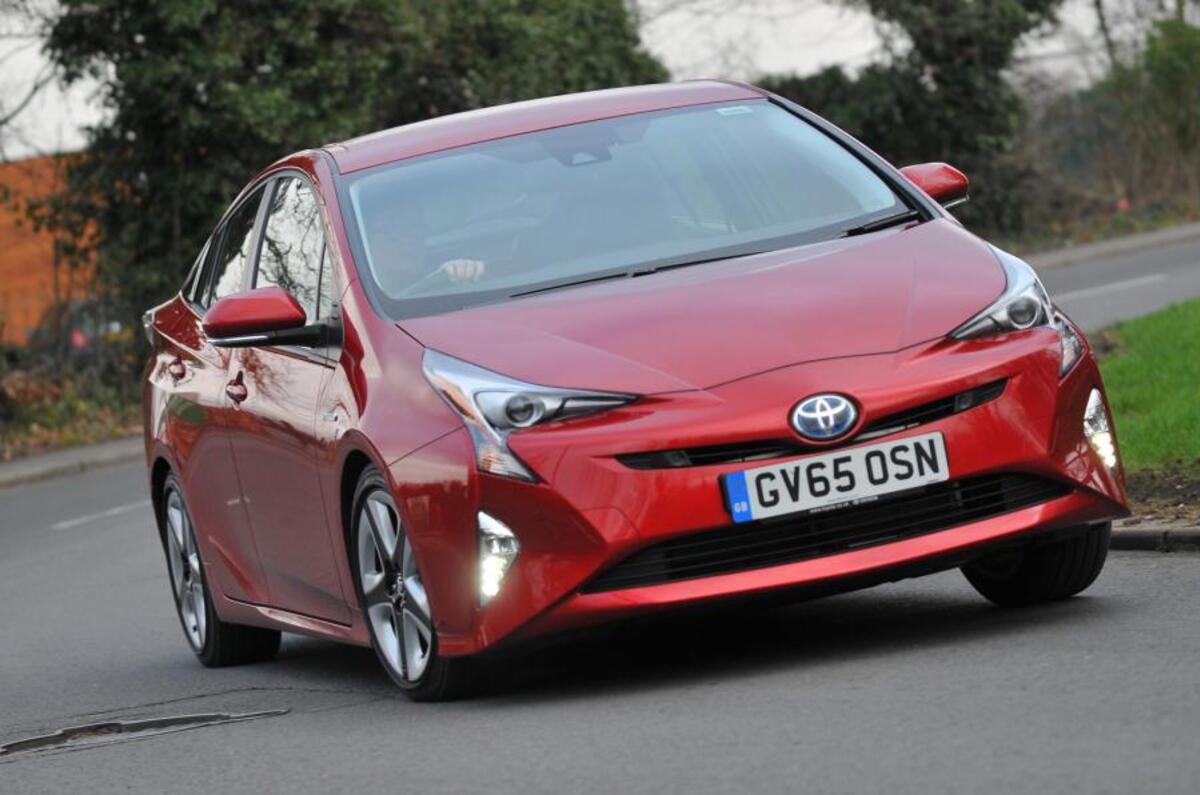New CO2 figures for the updated Toyota Prius have pushed the car out of the London Congestion Charge exemption zone, which dictates that cars must produce less than an average of 75g/km CO2 in order to enter the area free of charge.
A Transport for London (TfL) spokesman confirmed to Autocar that it won't be re-evaluating existing cars, however, so the Prius, which is now listed as producing 78g/km of CO2 according to Europe's latest emissions testing procedure, will keep its free pass into the capital's Congestion Charge zone even in its latest form.
The adjusted numbers are a result of changes to the New European Driving Cycle (NEDC) test. European regulators are now using this evolved process that adopts some parts of the Worldwide Harmonised Light Vehicle Test Procedure (WLTP), which will come fully into force next year.
New WLTP and RDE fuel economy and emissions tests explained
It's a tougher test, therefore it has edged the Toyota Prius range's official CO2 output to 78g/km for the most efficient variant on 15in wheels, representing an increase of 5g/km. Models equipped with 17in wheels now have CO2 emissions of 82g/km, up from 76g/km.
In addition to the new CO2 figures, the Prius also has an upgraded specs list, which includes Safety Sense driver assist technology as standard and minor visual changes.
BMW M3 F80 to be axed in August due to new emissions test
Also impacted by the 2018 emissions test changes is the larger Toyota Prius++, which gets the same upgrades as the standard Prius. Its average CO2 output is now rated at 106g/km, up from 96g/km. The Excel Plus model has been discontinued “due to WLTP challenges”.
The full Prius range, the most efficient variants of which have been long-standing favourites with private-hire drivers, will be tested under the full WLTP cycle in 2019. Emissions for the most efficient model are expected to rise above 90g/km when that happens.
Autocar is awaiting confirmation from TfL as to whether the Prius and other models like it will retain their Congestion Charge exemption beyond that.
The WLTP changes have also impacted the Volkswagen Up GTI’s CO2 emissions, which were recently raised from 110g/km to 127-129g/km. On average, the test is estimated to add around 15% to a car’s emissions over the previous NEDC procedure.
More content:
Diesel hit hard as January car sales fall by 6.3%
New WLTP real-world emissions test adds 15% to Volkswagen Up GTI's official CO2 output




Join the debate
Add your comment
But...
Doesn't the Prius actually emit no CO2 when it's running below 30mph? And if it's all emissions-based still, surely that should render it exempt for most of London's city streets? At what point will this actually become an Air Quality charge rather than a Congestion Charge?
Tweaks?
It is not tweaks to the range "including new colour paletes" which have pushed up the CO2 output of these cars - it is the new more rigourous testing regimes that have shown up the previous ones as being inadequate in real life.
Not so Pious after all?
This is happening all over
This is happening all over the industry and virtually all models will see realignments to emissions, all upwards. As others have said, this gives a more accurate picture of what engines have been producing all along.
Another downside, unfortunately for petrol, is that to achieve the higher standards particle filters will now appear on petrol engines too. Manufacturers that have already have fitted them have the same caveats in their brochures as for diesel engines regarding 'soot' build-up and the regeneration they require at various intervals.